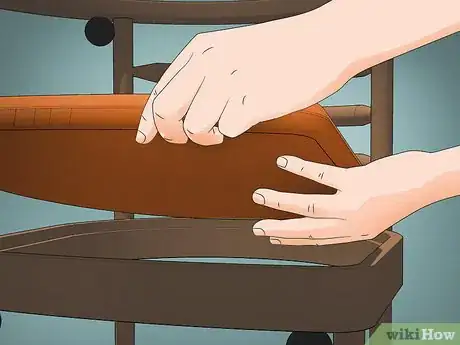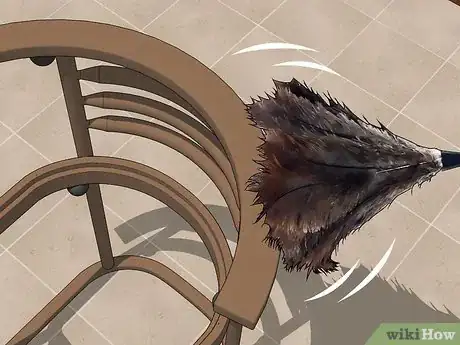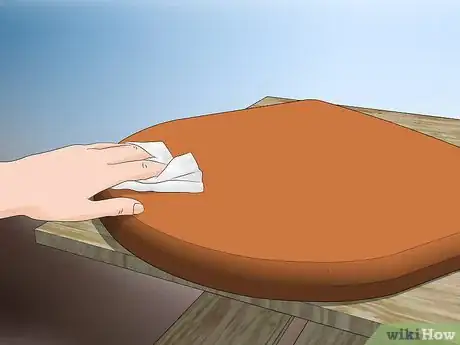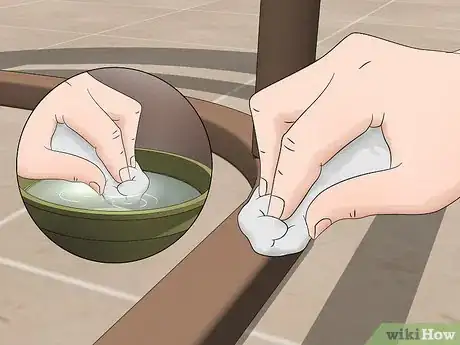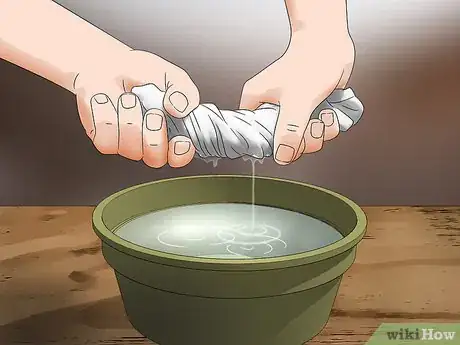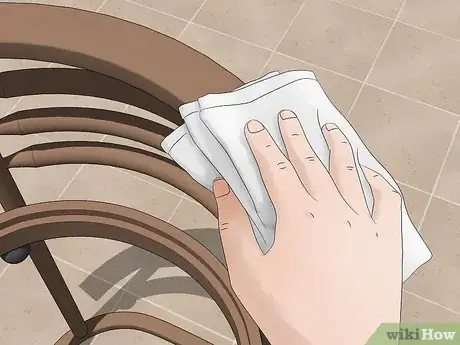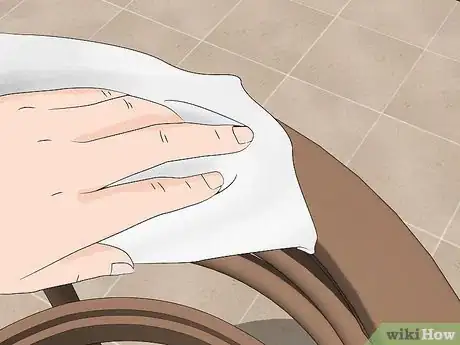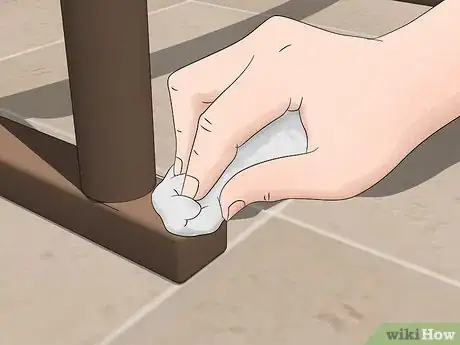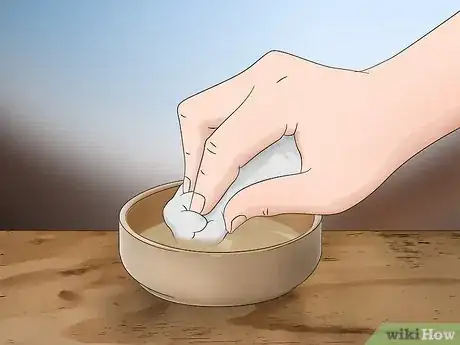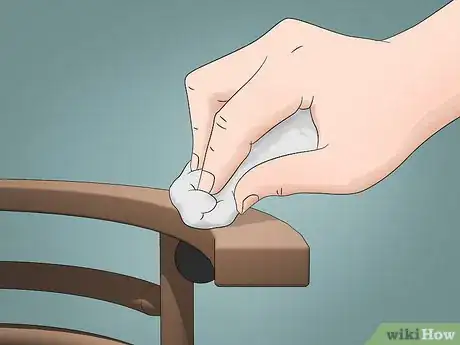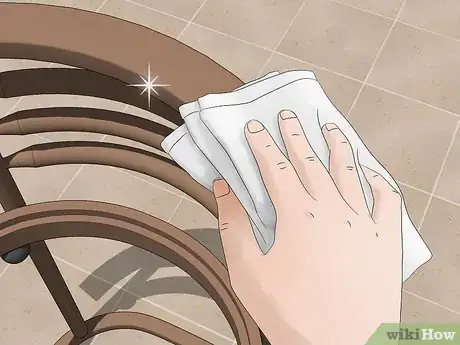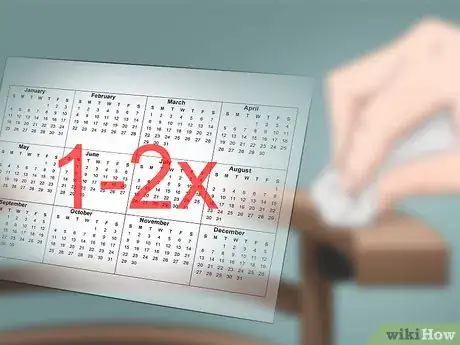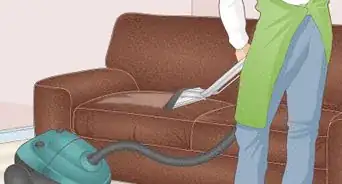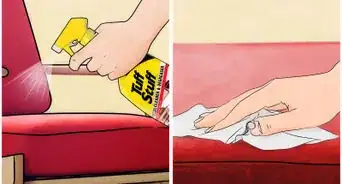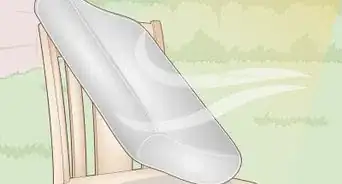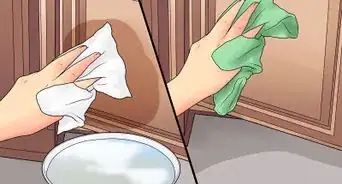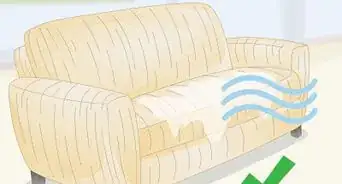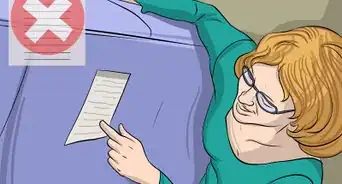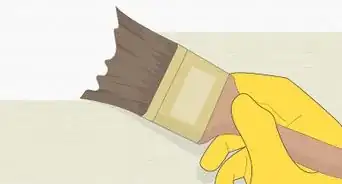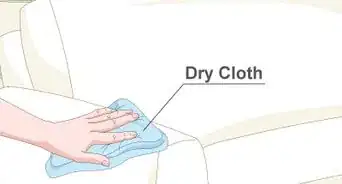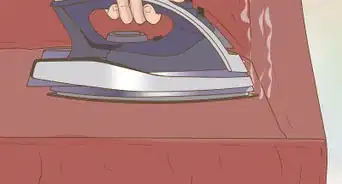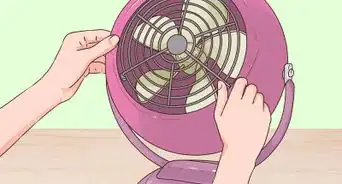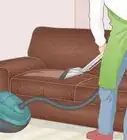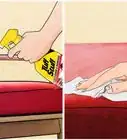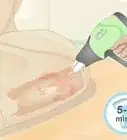This article was co-authored by Eduardo Peralta. Eduardo Peralta is a House Cleaning Specialist and the Manager of Best Maid House Cleaning based in San Jose, California. With over five years of experience, Eduardo and the Best Maid House Cleaning team specialize in home deep-cleaning, post-construction cleaning, and green and eco-friendly cleaning services. Best Maid House Cleaning is fully licensed and insured.
There are 8 references cited in this article, which can be found at the bottom of the page.
This article has been viewed 134,770 times.
Take off any removable, non-wood pieces from your furniture, such as non-structural hardware and cushions. Vacuum your furniture or dust it with a cloth on the surface and in any crevices. You can use white vinegar diluted in water for cleaning, or white vinegar mixed with olive oil for a clean and polish. Make sure your rag is soft and damp (not dripping), and buff the furniture dry with a clean cloth afterwards.
Steps
Removing Dust
-
1Remove hardware and cushions. Pull the furniture away from the wall, if applicable. Set aside any cushions, pillows, and other such objects from the surface of the furniture. Take off any hardware you’ll be able to put back on, such as screws or decorative knobs.
- Don’t take off any hardware that’s holding the furniture together.
-
2Vacuum or dust the furniture. Start off with dusting the furniture. You need the surface to be clean of dust or any debris.[1] Use a non-spinning brush attachment on your vacuum cleaner to gently clean the cracks and surface of the furniture. Alternately, dampen a clean cloth just a bit and wipe the wood down instead.
- You’ll need a stationary brush attachment because a spinning attachment can leave scratches.
Advertisement -
3Clean cushions, if applicable. Check the tags on your furniture or cushions to determine what type of fabric they are so you’ll know how best to clean them. You’ll want to clean cushions or pillows before putting them back on your clean wood furniture.
- For instance, if the tag says “W,” that means to clean it with water. “S” and “S/W” should be professionally dry-cleaned. “X” means vacuuming only.
Cleaning with Vinegar
-
1
-
2Find an inconspicuous area to test. For instance, you may want to test the solution underneath the furniture in a spot that isn’t easily seen. Dampen a cloth with your solution, so that the cloth is moist, not dripping. Apply a small amount of the solution to the test area, then buff it dry with a clean cloth.[5]
- If you don’t notice any negative effect to the test area, you can proceed with cleaning the whole piece.
- In addition to or instead of the test area, consult with the manufacturer of your furniture via their website to find the proper care instructions for your furniture.
-
3Wet a cloth with the solution. Use a soft, clean rag or a piece of cheese cloth.[6] You can spray the solution onto the rag or dip the cloth in the bucket of solution. Make sure to completely wring out the cloth so that it’s not overly saturated.
- Too much liquid can penetrate the wood and cause damage. Don’t spray the furniture directly.
-
4Rub the furniture with the moistened cloth. Make circular motions. Rub with the grain to remove water marks. Rinse the cloth or switch to a clean one when you see it becoming visibly dirty.[7]
-
5Buff out excess moisture. Use a clean cloth to buff the wood in circular motions. If you notice any spots that didn’t get clean, use the cleaning solution on them and go back to buffing. Make sure to buff away moisture as the last step.
Polishing with Vinegar and Oil
-
1Dilute white vinegar with olive oil. Mix one part olive oil to one part vinegar. Add a small squirt of lemon oil or fresh lemon juice, if desired.[8] You won’t need a lot of solution; you can pour the mixture in a jar, put a lid on the jar and shake to mix.[9]
- Instead of olive oil, you can try 1/4 cup (60 mL) fresh lemon juice, 1/8 cup (30 mL) distilled vinegar, and 1/8 cup (30 mL) flax oil to restore your wood furniture.
- Olive oil and vinegar polishes, restores moisture to dry wood, and can remove light scratches and rings from water condensation.
- Besides having an attractive fragrance, lemon is acidic, so it works as a cleaning agent.
-
2Find an inconspicuous area to test. For instance, you may want to test the solution in a small area underneath the furniture. Dip your cloth to get just a bit of solution on it. Rub the cloth on the test area, then buff it dry with a clean cloth.
- If you don’t notice any negative effect to the test area, you can proceed with cleaning the whole piece.
- In addition to or instead of the test area, consult with the manufacturer of your furniture via their website to find the proper care instructions for your furniture.
-
3Apply the solution to a cloth. Use a soft, clean rag or a piece of cheese cloth.[10] Dip the rag to get a small amount of the mixture on it.
- Too much liquid can penetrate the wood and cause damage. Don’t pour solution directly onto the furniture.
-
4Rub the furniture with the moistened cloth. Make sure to distribute the polish evenly. Rub with the grain to remove water marks and scratches.[11] Switch to a clean area of the cloth, or a new cloth, when you see it becoming visibly dirty.
-
5Buff out excess moisture. Use a clean cloth to buff the wood in circular motions. If you notice any spots that didn’t get clean, use the cleaning solution on them and go back to buffing. Make sure to buff away moisture as the last step.
-
6Polish the wood one to two times per year. Annual or biannual polishing will give your wood furniture moisture and shine, and help prevent it from looking dry and worn.
Community Q&A
-
QuestionHow should I clean white wooden furniture?
 Community AnswerIt depends on the kind of furniture. I'm going to assume the furniture is "soft." If you're just cleaning it because of light stains and dust, using Pledge will be sufficient. For tougher stains, I recommend products like Goo-Gone. But like I said, it depends on the type of furniture.
Community AnswerIt depends on the kind of furniture. I'm going to assume the furniture is "soft." If you're just cleaning it because of light stains and dust, using Pledge will be sufficient. For tougher stains, I recommend products like Goo-Gone. But like I said, it depends on the type of furniture.
Warnings
- Avoid cleaning painted wood with vinegar. Opt for dry dusting or dampen a rag with water instead, then buff dry.⧼thumbs_response⧽
- Don’t clean wood furniture with undiluted vinegar. This can leave water marks and the acid can damage your furniture’s finish.[12]⧼thumbs_response⧽
- Don’t use oil polish if the surface of your furniture is waxed.⧼thumbs_response⧽
Things You'll Need
- Appropriate hand tools for removing hardware, if applicable
- Vacuum with stationary brush attachment
- White vinegar
- Filtered water or olive oil
- Soft cloths
- Bucket, bowl, spray bottle or jar
References
- ↑ Eduardo Peralta. House Cleaning Specialist. Expert Interview. 29 October 2021.
- ↑ James Sears. House Cleaning Professional. Expert Interview. 28 August 2019.
- ↑ http://healthyblenderrecipes.com/recipes/homemade_natural_eco_green_wood_furniture_polish
- ↑ Dario Ragnolo. House Cleaning Professional. Expert Interview. 13 August 2019.
- ↑ Dario Ragnolo. House Cleaning Professional. Expert Interview. 13 August 2019.
- ↑ https://patch.com/georgia/roswell/tricks-for-restoring-wood-furniture-no-sanding-required
- ↑ Dario Ragnolo. House Cleaning Professional. Expert Interview. 13 August 2019.
- ↑ http://www.allyou.com/budget-home/organizing-cleaning/how-to-make-furniture-polish
- ↑ http://www.handymanmatters.com/blog/fool-proof-tips-for-cleaning-wood-surfaces/
About This Article
To clean wood furniture, start by dusting or vacuuming your furniture. Then, mix 3 tablespoons of white vinegar with 1 cup of water. Next, spray some of the liquid onto a cloth and wipe down the surface of your furniture, taking care not to make it too wet. When you see the cloth getting dirty, wash it out with clean water or use a new one. Finally, combine equal parts vinegar and olive oil to polish your furniture once you've finished cleaning. For tips on how to dust your furniture before cleaning it, read on!
